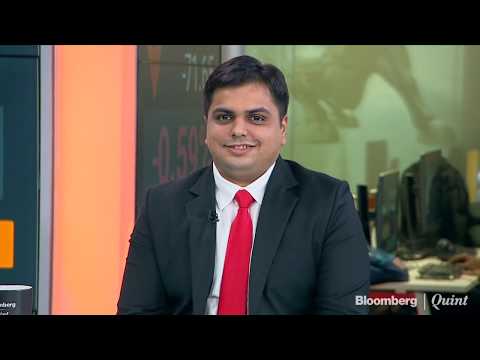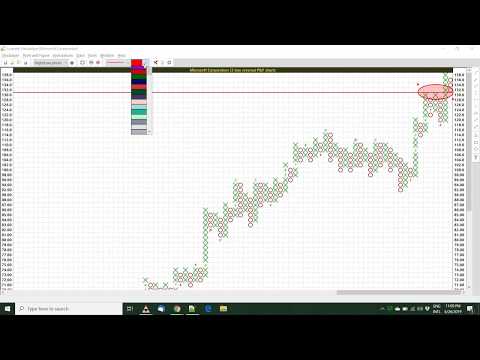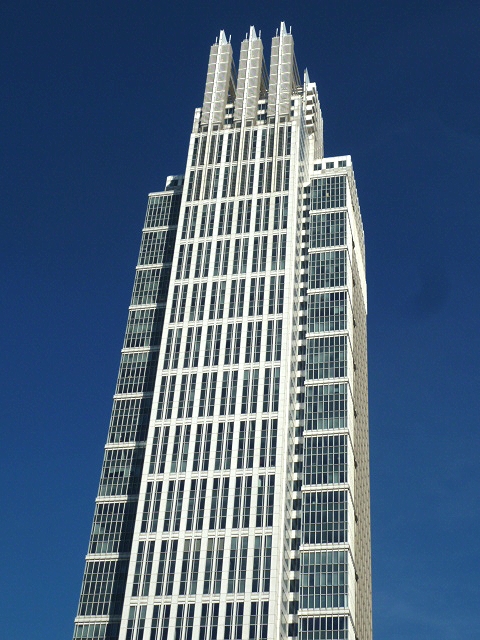
But Russia is no longer a member of the G-8, and Putin must pursue his strategy of “de-offshorization” alone and with little chance of success. But even if foreign markets remain out of reach, a falling currency theoretically should stimulate domestic production if only because foreign goods inevitably will become too expensive for Russian consumers. Moscow has heralded its food sanctions — which ban the import of European Union and U.S. meat, fruit and vegetables — as just such a chance to force Russians to buy local produce. Putin’s pursuit of greater imperial glory has brought an unrelenting stream of bad economic news. The dramatic collapse of the price of oil means a decline in state revenues and less money for Putin’s ambitious military and social spending projects.

Mr Putin has spent years preparing for a financial stand-off with the West. Since 2015 the value of Russia’s central-bank reserves has risen by 71%, with most of the increase in the form of gold or Chinese yuan. The bank has also cut the share of its reserves held in America and France. Nonetheless, 70% remain in countries that are imposing sanctions, limiting Russia’s ability to support the rouble.
Elliot Page hopes ‘Close to You’ will move people
Some experts say that Russia has likely been selling oil above the $60 price cap, partly due to a loophole where oil suppliers inflate shipping costs but are technically selling crude below the $60 threshold. That alone could have brought in more than $1 billion https://1investing.in/ to Russia over the second quarter, according to a Financial Times analysis. Addiction refers to a specific condition in which there is an imperative to allocate rents to the backward production structure that Russia inherited from the Soviet Union.
The most recent banking crisis took place in waves
waves
, with the biggest one happening in 2017. The central bank spent nearly $20 billion to rescue top lenders and protect depositors from the fraudulent activities and poor risk management practices of Russia’s banking elite. “Banks do not process or accept payments in and out of Russia, and often times global counterparts have self-imposed compliance standards that are much stricter than the law,” he says. At the same time, in addition to widening the currency band, authorities also announced that they intended to allow the RUB/USD rate to move more freely within the wider band. Additionally, on 15 July 1998, the State Duma, which was at the time dominated by left-wing parties, refused to adopt most of the government’s anti-crisis plan, so the government was forced to rely on presidential decrees. On 29 July, Yeltsin interrupted his vacation in Valdai Hills region and flew to Moscow, prompting fears of a Cabinet reshuffle, but he only replaced Federal Security Service Chief Nikolay Kovalyov with Vladimir Putin.
The Brookings Institution is a nonprofit organization based in Washington, D.C. Our mission is to conduct in-depth, nonpartisan research to improve policy and governance at local, national, and global levels. “Investors are swimming in a soup of fear, and they don’t know how to incorporate geopolitical news into their pricing,” said Mike Zigmont, head of research and trading at Harvest Volatility Management in New York. Ten of the 11 S&P 500 sector indexes fell, led by financials (.SPSY), down 3.7%. In 2020, the High Court in London ordered them to pay the Russian government-owned bank $900 million, but the ruling has not been implemented yet.
- So in that case alone, the market tells me that somebody in Russia did something right,” he says.
- Thanks to sanctions, however, Russian companies and banks are busy seeking bailouts, not new markets.
- But Russia is no longer a member of the G-8, and Putin must pursue his strategy of “de-offshorization” alone and with little chance of success.
- The exclusion of the top Russian domestic retail banks from the Swift messaging system at the same time creates some domestic uncertainty.
- Ironically, Putin had intended to use Russia’s chairmanship of the G-8 to lead a global fight against tax havens and offshore banking.
The Kremlin has boasted about Russia’s economic outlook while the central bank has predicted that the economy will grow by up to 2.5% this year, despite crippling western sanctions. Eventually, this will lead to a rise in consumer prices, and it will coincide with the election campaign,” Solovyov added, referring to the Russian presidential election scheduled for March 2024. But he acknowledged that high inflation made it “practically impossible” to form business plans.
International organizations and corporations
It makes a valuable contribution to the debate over how to deal with a weakened but still highly relevant Russia. As Russia sells less crude, it is also trying to sell more of its premium refined oil—its second tactic for keeping proceeds afloat. To do so, it can process more crude through its refineries by mobilising idle capacity, which Kpler estimates at 10% of the total. Analysts reckon it will postpone much of the maintenance scheduled for this month to autumn next year.
- It makes a valuable contribution to the debate over how to deal with a weakened but still highly relevant Russia.
- Addiction’s most pernicious feature is that it is self-reinforcing, which means that it continually deepens and reproduces backwardness and inefficiency in the Russian economy.
- And it is maximising yields of diesel, a highly profitable product, to the detriment of jet fuel.
- Companies eager to take advantage of these dynamics quickly accumulated U.S. dollar-denominated debt—including Russia’s debt that increased from 6.5 percent of GDP in 2008 to 13.5 percent of GDP by 2017.
As the U.S. and its allies continue to impose harsh financial sanctions on Russia, the country seems to be nearing a financial crisis. As President Biden put it yesterday in a speech, the Russian ruble has been reduced to, quote, “rubble.” Western companies have withdrawn their business. Russian banks have largely been cut off from the global financial system. And this past week, Biden pushed to exclude Russia from the G-20, the group of 20 leading economies. Russia’s economy is heavily dependent on crude oil and natural gas, especially when it comes to state-owned giants like Gazprom. Between mid-2014 and early-2016, crude oil prices have fallen from a high of $107.95 per barrel to a low of $29.16 per barrel, cutting deep into the country’s major source of revenue.
Beijing blasts ‘protectionist’ EU probe as China EV stocks slip
In normal times, the worst effects of most depressions aren’t felt for months. In early 1995, it was estimated that the war was costing Russia close to $30 million per day. Following the cessation of hostilities in 1996, it was estimated that the war in Chechnya cost Russia $5.5 billion, causing budget deficits close to 10% of their GDP.[6][7] In the first half of 1997, the Russian economy showed some signs of improvement. However, soon after this, the problems began to gradually intensify. Before Russia invaded Ukraine in February 2022, subjecting the Russian economy to steep sanctions from the international community, it faced economic turmoil that began in mid-2014 with the rapid collapse of the ruble in the global foreign exchange market.
The West Needs a Russia—Not a Putin—Policy – The Nation
The West Needs a Russia—Not a Putin—Policy.
Posted: Wed, 13 Sep 2023 13:34:19 GMT [source]
Russia’s central bank has announced it will hold an extraordinary meeting on Tuesday to discuss the level of its key interest rate after the rouble fell to its weakest point in almost 17 months. Reuters, the news and media division of Thomson Reuters, is the world’s largest multimedia news provider, reaching billions of people worldwide every day. Reuters provides business, financial, national and international news to professionals via desktop terminals, the world’s media organizations, industry events and directly to consumers. The financial collapse resulted in a political crisis as Yeltsin, with his domestic support evaporating, had to contend with an emboldened opposition in the parliament.
Western sanctions have rocked Russia’s financial system
We will conclude by asking how each was affected by the crisis and how they might look in the future. We will argue that Russia’s experience is more than just oil and gas dependence. What makes Russia unique is the combination of resource dependence with addiction and its specific rent management system. Wells Fargo tumbled 5.8% and the broader banks index (.SPXBK) declined 4.8% as U.S. 10-year Treasury yields slumped to five-week lows amid a flight to safe-haven debt.
The only silver lining for Russia is that the prices of its commodity exports have surged. European governments carved out energy sales from the sanctions, letting customers continue buying natural gas—whose spot price has more than doubled—from Russia. Revenue from oil and gas funded a third of Russia’s government budget in 2021, enough for two years of military spending at the pre-war rate.
Those funds need to be uncovered and placed under sanctions, the note said. Those reserves will be untouched until Russia pays for the damage it caused in Ukraine, the G7 said at a recent summit. Using that money now to help rebuild Ukraine would have an “enormous” symbolic impact, researchers said, especially since Russia has likely written off those funds as permanently lost.
Yet, Russian president Vladimir Putin smirks at the burning buildings of Credit Suisse and the lost $200 billion in Silicon Valley Bank deposits, needing unprecedented FDIC support to protect account holders. But only because most of Russia’s banks over the years have been folded and rendered insolvent, and a danger to the Russian financial system. Russia’s financial sector, and its banks at home, aren’t making headlines like banks in the U.S. and Europe are.
The crisis affected the Russian economy, both consumers and companies, and regional financial markets, as well as Putin’s ambitions regarding the Eurasian Economic Union. The Russian stock market experienced large declines, with a 30% drop in the RTS Index from the beginning of December through 16 December 2014. Such integration would help align Russian and Western economic, and eventually perhaps political, interests and give Moscow real incentives to be a responsible player in the global economy. The danger is that, should the Russian economy turn around quickly (presumably due to a rapid rise in oil prices), such a strategy of engagement will not have time to take effect. For that reason, the West also needs to hedge against the danger of a renewed Russian push for regional dominance.
It should therefore encourage reform in post-Soviet states bordering Russia, whose weakness may tempt Russian leaders to pursue a strategy of regional integration and autarky rather than integration into global institutions. In the short term, a weaker rouble could help the authorities to fund its extensive war spending. Russia sells its oil in foreign currency and the current exchange will buy more roubles at home.
Along with the ruble sinking, inflation is rising and capital flight has soared to record highs. The first—chasing higher prices for the fewer barrels it sells—has faced difficulties. Between January and August, the price of Urals, Russia’s main grade of crude, averaged $59 a barrel, down from $83 in the first eight months of last year. This was mostly because of a lower global oil price, which fell from $104 to $81 over the period. But Western embargoes, which make it easier for other buyers, such as China and India, to negotiate down prices probably played a part, too.
At the time, the Moscow Interbank Currency Exchange (or “MICEX”) set a daily “official” exchange rate through a series of interactive auctions based on written bids submitted by buyers and sellers. When the buy and sell prices matched, this “fixed” or “settled” the official MICEX exchange rate, which would then be published by Reuters. The MICEX rate was (and is) commonly used by banks and currency dealers worldwide as the reference exchange rate for transactions involving the Russian ruble and foreign currencies. The upshot is that U.S. interest rates have been rising more slowly than many experts had initially expected following the first rate hike.
Nations representing half the world’s economy, using many levers of financial might against one representing 2% of the world economy, while keeping energy exports flowing and nuclear weapons in bunkers. “There is nothing more to support the rouble. Turn on the printing press. Hyperinflation and economic catastrophe are just around the corner,” he added. It is the deployment of of heavy weaponry in a financial theatre of war. And it is designed to push the whole of Russia in to as deep a recession as possible, with the added chaos of bank runs.
“We saw the ruble go down when sanctions were first imposed, then it went up. So in that case alone, the market tells me that somebody in Russia did something right,” he says. Also, since Russia’s economy was operating to such a large extent on barter[23] and other non-monetary instruments of exchange, the financial collapse had far less of an impact on many producers than it would have had the economy been dependent on a banking system. As enterprises were able to pay off debts in back wages and taxes, consumer demand for goods and services produced by Russian industry began to rise. On 2 September 1998, the Central Bank of the Russian Federation decided to abandon the “floating peg” policy and float the ruble freely. By 21 September, the exchange rate reached 21 rubles for one US dollar, meaning it lost two-thirds of its value of less than a month earlier.
Global financial markets
A government document reviewed by Reuters this month showed that Moscow had doubled its 2023 defence spending target to more than $100bn (£79bn), a third of all public expenditure. Last week the Russian central bank took steps to stabilise the rouble, holding purchases of foreign currency until 2024 “to reduce volatility”. But the move did not immediately stop the currency’s decline, raising worries among Russian policymakers of the possibility of significantly higher consumer prices. Although its geopolitical strategy puts it at odds with the West, Russia is an integrated member of the global economy. Russia trades oil, gas, and coal to much of Europe and wheat to the Middle East and Africa. The sanctions imposed so far amount to a kind of siege of a country that depends on access to global markets.

Sberbank CEO Herman Gref said in press reports that Sberbank is “the most attacked entity” in the country, which experiences “unprecedented challenges in terms of complexity and power.” He said Sberbank lost nearly all of its assets abroad, leading to massive write-downs. Banks like VTB, which had an investment banking arm and an asset manager in Europe, with offices in London, will now be hard-pressed to help European firms do bond issues or stock offerings. They were once industry leaders in this, especially banner advertising examples in smaller European Union states like Czech Republic. VTB Bank’s offices in London have been closed since last March as its assets were frozen in February. Beyond those examples, had the sanctions come at the time when the Russian Central Bank was cleaning up its “zombie banks” – all hell would have broken loose. But seeing how much of that mess was swept away prior to the 2022 sanctions regimes taking hold, Russia’s banks remain safe and sound, even if Russian investors in those banks have lost their shirt.




